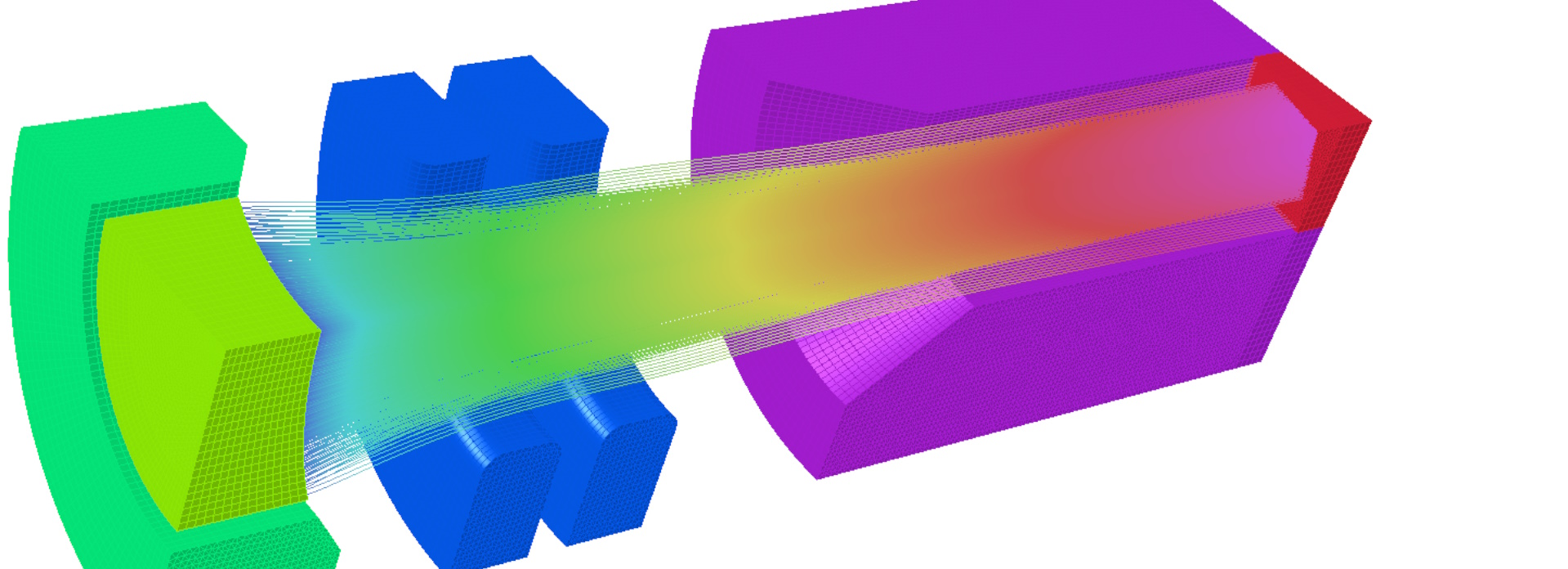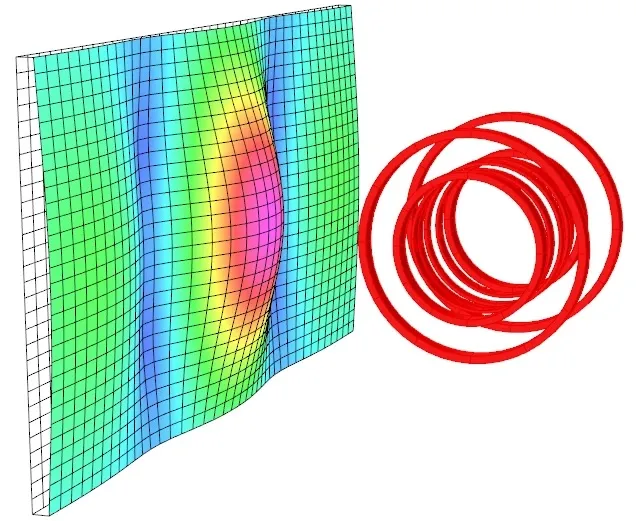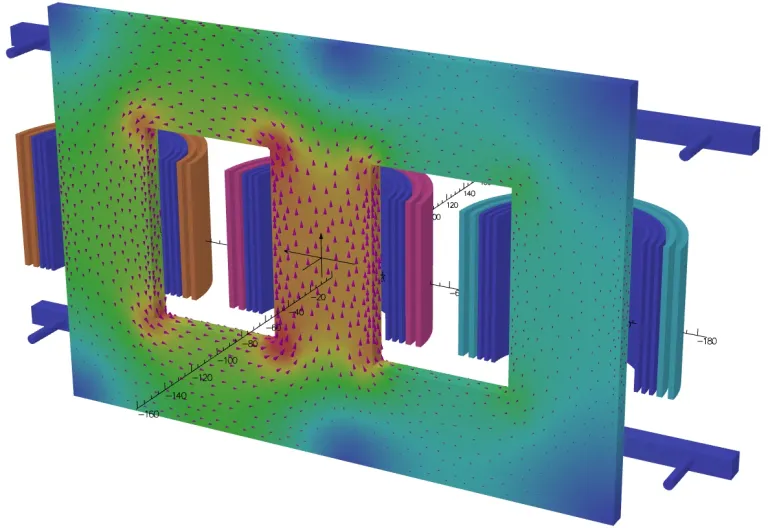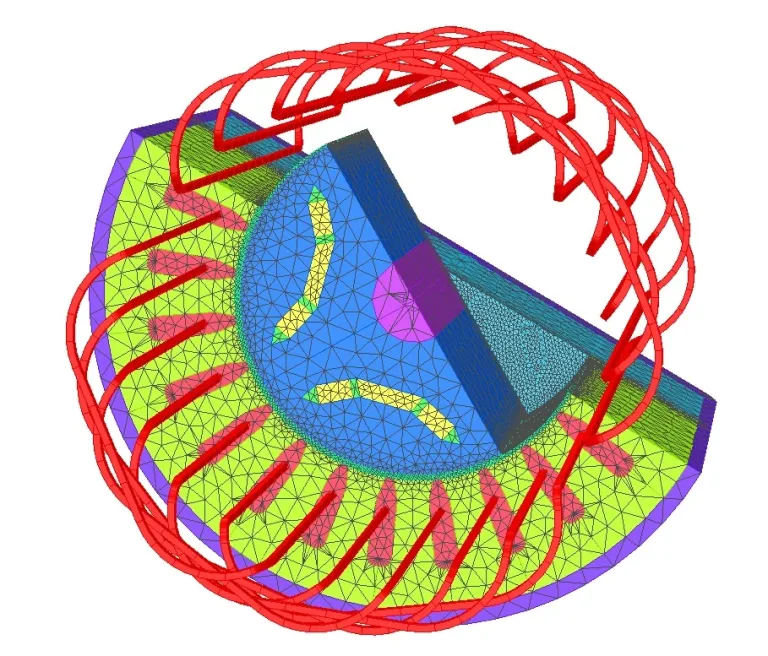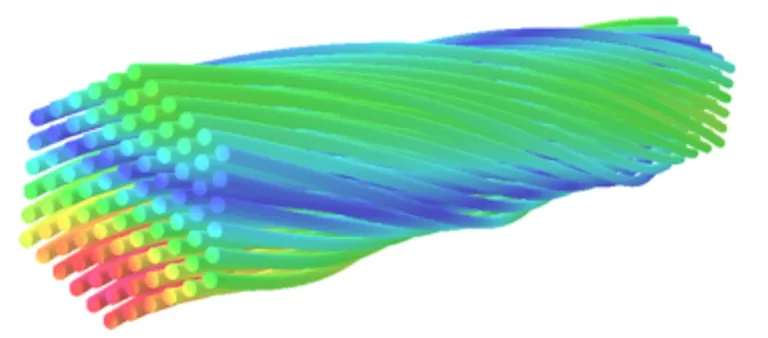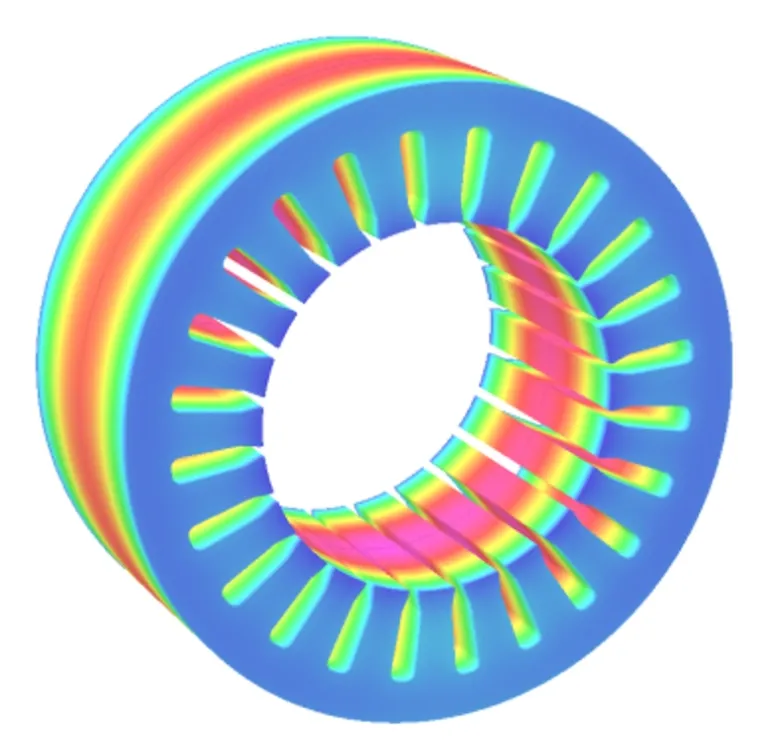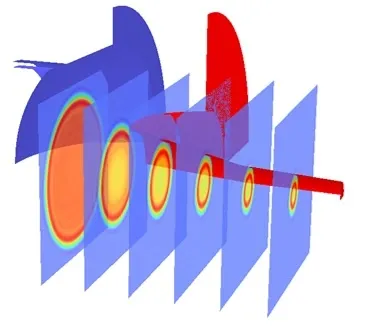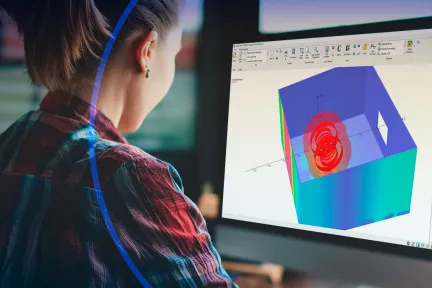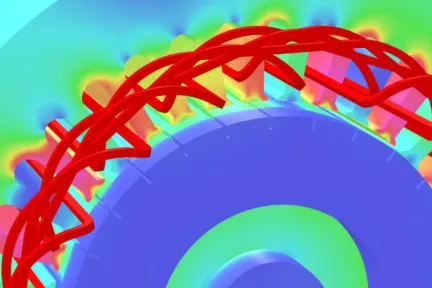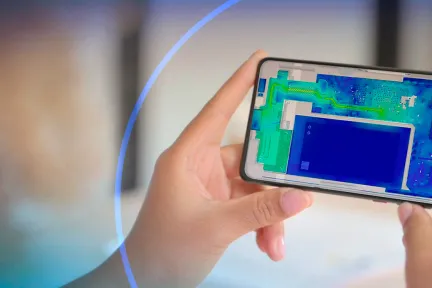Opera Solutions
Advanced Solutions Focused on the Simulation of Low-frequency and Charged Particle Applications
Opera Solutions for Low-Frequency Electromagnetics
Opera Simulation Software is a Finite Element Analysis software suite which allows users to perform simulations of electromagnetic (EM) and electromechanical systems in two and three dimensions. Opera complements the existing SIMULIA EM portfolio with its strength in low frequency simulation, which is useful for the design of magnets, electric motors and other electrical machines.
- Statics
- Dynamic Electromagnetics
- Motion
- Quench
- Thermal and Mechanical
- Charged Particle
Static Module
Used extensively in scientific and engineering applications, the Opera Static Module computes magnetostatic and electrostatic fields. It uses the FEA method to solve Maxwell’s equations for the static case in a discretized model.
For 3D magnetostatics, the algorithms used in the Static Module automatically treat volumes in the model that contain magnetic sources differently from volumes without sources. By using this powerful method, the module successfully avoids cancellation errors that can occur using alternative solution methods. Therefore, the accuracy of the solution is often far higher than expected from a Finite Element Analysis. In this module, users can specify magnetic material properties as linear, non-linear, isotropic, anisotropic, laminated or permanent magnet.
Electromagnetic sources include permanent magnets, coils and external fields. In this module, users can specify magnetic material properties as linear, non-linear, isotropic, anisotropic or laminated. The proprietary method in Opera deploys the Biot-Savart integral to calculate magnetic fields from coils. Opera-3D includes a helpful library for easy definition of standard shapes, such as solenoids and racetracks, and also offers users the flexibility to create coils of any topology. Using the “lossy dielectric” option, users can simulate electric fields resulting from the charging of low-conductivity dielectrics.
Dynamic Electromagnetic Module
The Opera Dynamic Electromagnetic Module calculates time-varying electromagnetic fields and eddy current flow in electromagnetic devices and systems. The calculation includes eddy currents induced by time-varying currents. The field sources can be both harmonic and time-transient signals and complex material properties such as hysteresis and permanent magnet demagnetization can be a part of the model definition. Geometry invariant motion can also be included as a source of eddy currents.
There are three different types of dynamic solution available, each having a different form of time variation:
- Harmonic calculates steady-state ac currents where all fields and potentials are oscillating at the same frequency.
- Transient calculates transient eddy currents induced by the fields of driving currents, boundary conditions and external fields which change in time in a predetermined way.
- Fixed Velocity calculates eddy currents induced by motion which does not change the geometry of the model. The source fields and driving conditions are invariant.
Electromagnetic Motion Module
The Opera Electromagnetic Motional Module computes time-varying fields and eddy currents in devices with rotating or linear movement causing remeshing during solution. Parts of the geometry, and hence the finite element mesh, can move independently at speeds controlled by the user or calculated as the analysis proceeds. This transient analysis considers induced eddy currents in conducting media both through the effects of the moving magnetic fields, as well as through the time variation of the model sources.
This module has been designed to include dynamic modeling of all types of electrical machines, including permanent magnet (PM), induction, switched reluctance, synchronous and synchronous reluctance. It can investigate commutation effects, transient responses and steady state performance, and unbalanced local effects.
The solver calculates eddy current losses in all materials, including permanent magnets. The demagnetization in service of permanent magnets can also be part of the solution. Calculations can include the electrical drive under normal and fault conditions and a dynamic mechanical load. At each time-step, the module calculates the electromagnetic force on the moving parts (rotation or translation) and applies an incremental movement followed by a recalculation of the electromagnetic fields.
Quench Module
This module analyzes the quenching of superconducting magnets. The Opera Quench Module simulates the temperature rise of a superconducting magnet during a quench, including the transition to being resistive as the quench propagates through the magnet. The heat that triggers a quench event can be from various sources. Typically, in a DC system it is due to a failure in the cryogenic system, ramping the system too quickly, or by deliberate introduction in test situations. In simulation, this heat is included as a surface or volume property or through rate dependent, ohmic or hysteresis losses in materials due to current flowing or fields in them. In this instance, there is significant anisotropy in the material properties as thermal conductivity is dominant along the winding direction, requiring specific modeling techniques for efficiency and accuracy.
The quench module uses advanced FE techniques to model the highly non-linear transient behavior of a magnet during a quench. Using an algorithm which couples the electromagnetic solution to the thermal and circuit solutions (to determine the currents in the coils), it analyzes the full quenching process.
Thermal and Stress Analysis Module
The Opera Thermal Analysis Module computes the steady state or transient temperature, heat-flux, and thermal-gradient fields due to electromagnetic heating or external heat sources. The user can specify thermal properties, such as the conductivity tensor or specific heat and heat source density as a function of position. The thermal properties can be temperature-dependent, leading to a non-linear analysis.
In stand-alone mode, the user defines the distribution of heat input in the thermal module. In a multi-physics simulation, other Opera solution modules provide the distribution of heat. It is possible to include multiple heat sources (for example, eddy current heating and iron losses in a motor) in a single calculation.
The Thermal Module calculates the temperature distribution in the model. If material properties are temperature-dependent, it can modify the electromagnetic solution.
The Stress Analysis Module analyzes the stress induced by electromagnetic forces or thermal expansion. Subsequent thermal and electromagnetic simulations can calculate the deformation caused to deliver accurate results.
The Stress Solver can solve for linear static stresses in two or three dimensions. Results include deformations, strains and stresses. In three dimensions, the stress solver also calculates the natural modes of the structure that is, the eigenvalues and eigenvectors.
Charged Particle Module
The Opera Charged Particle Module calculates the interaction of charged particles in electrostatic and magnetostatic fields. It uses the Finite Element method to solve Maxwell’s equations for the steady-state case in a discretized model. In addition, it provides a self-consistent solution including the effects of space-charge, self-magnetic fields and relativistic motion.
The Charged Particle Module provides a comprehensive set of emitter models. This set includes thermionic and field effect emission from surfaces, secondary emission from surfaces and within volumes (used to model gas ionization), and models for unmagnetized and magnetized plasmas. It is possible to include multiple species of charged particles, each having user-defined charge and mass.
In a multiphysics analysis, the Charged Particle module can simulate the particle beam-generated heat and the deformations calculated by a stress analysis can be used to check the effects of deformations on the charged particle model.
Also Discover
Learn What SIMULIA Can Do for You
Speak with a SIMULIA expert to learn how our solutions enable seamless collaboration and sustainable innovation at organizations of every size.
Get Started
Courses and classes are available for students, academia, professionals and companies. Find the right SIMULIA training for you.
Get Help
Find information on software & hardware certification, software downloads, user documentation, support contact and services offering
